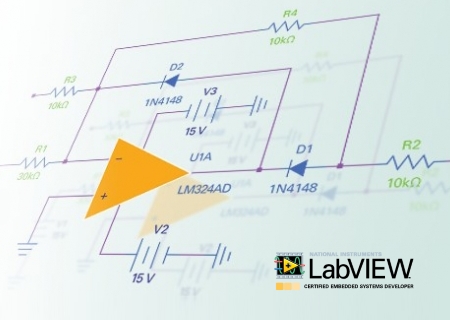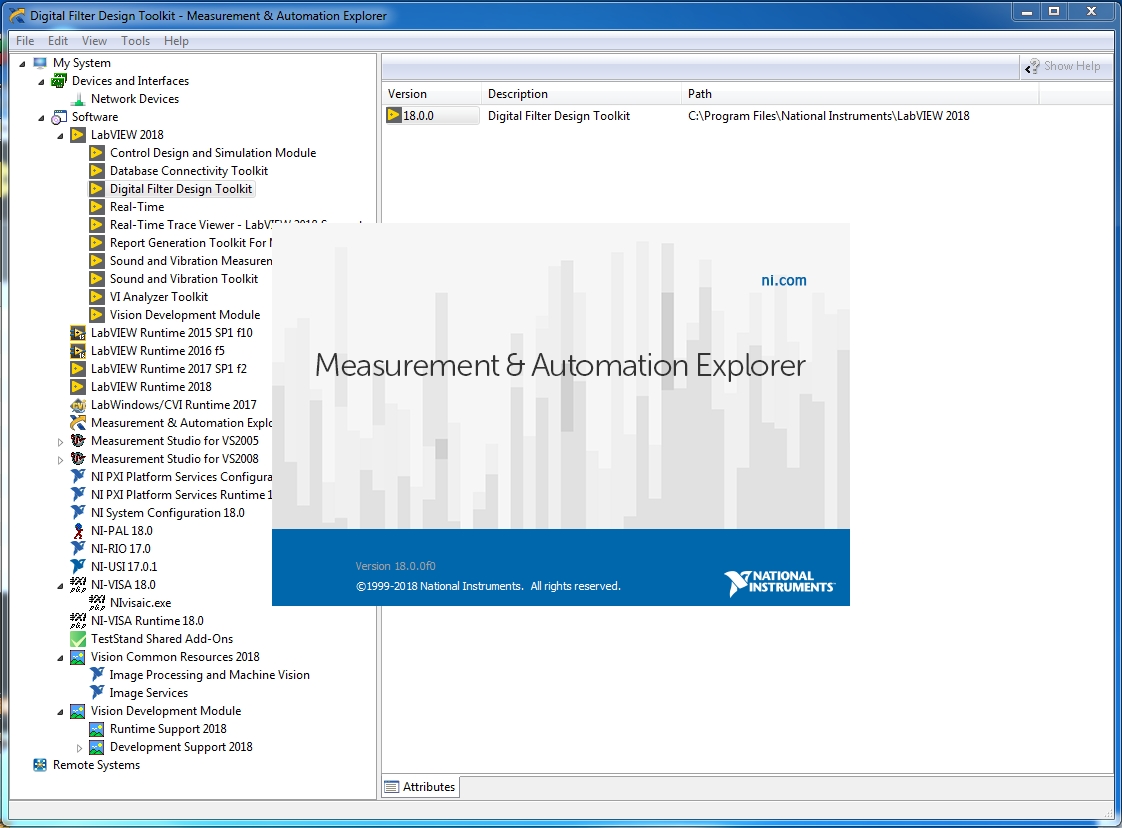
National Instruments (NI), has announced the release of LabVIEW 2018 Digital Filter Design Toolkit, is extends LabVIEW with functions and interactive tools for the design, analysis, and implementation of digital filters. New digital filter users can explore classical designs with the built-in interactive design tools, while experienced users can find a breadth of algorithms, filter topologies, and analysis tools for both fixed- and floating-point digital filters. For fixed-point filters, you can model quantization effects, optimize numeric representation/topology, and deploy the design on a digital signal processor or FPGA using automatically generated ANSI C or LabVIEW FPGA code.

About NI LabVIEW Digital Filter Design Toolkit. The Digital Filter Design Toolkit includes the Digital Filter Design VIs and the Adaptive Filters VIs to provide a collection of digital filter design tools, including adaptive filter design tools, to supplement the LabVIEW Full Development System. The Digital Filter Design Toolkit helps you design digital filters and filter banks without requiring you to have advanced knowledge of digital signal processing or digital filtering techniques. With the Digital Filter Design Toolkit, you can design and analyze floating-point and fixed-point digital filters and filter banks. With the Digital Filter Design Toolkit, you also can design and analyze floating-point and fixed-point adaptive filters. You also can simulate fixed-point digital filters, including fixed-point adaptive filters.
Without prior knowledge about programming in LabVIEW, you can use the Digital Filter Design Express VIs to interact graphically with filter specifications to design appropriate digital filters and filter banks.
The Digital Filter Design VIs help you design the following filters and filter banks:
– Digital finite impulse response (FIR) or infinite impulse response (IIR) filters—You can use the VIs to analyze the characteristics of the digital filter, change the implementation structure of the digital filter, and process data with the digital filter. In addition to the floating-point support, the Digital Filter Design VIs also help you create a fixed-point digital filter model, analyze the characteristics of the fixed-point digital filter, simulate the performance of the fixed-point digital filter, and generate fixed-point C code, integer LabVIEW code, or (32-bit only) LabVIEW field-programmable gate array (FPGA) code for NI FPGA targets.
– Floating-point multirate digital filters—You can use the VIs to design a floating-point single-stage or multistage multirate filter, analyze the characteristics of the floating-point multirate filter, and process data with the floating-point multirate filter. In addition to the floating-point filter design, the Digital Filter Design VIs also help you create a fixed-point multirate filter, analyze the characteristics of the fixed-point multirate filter, simulate the behavior of the fixed-point multirate filter, and (32-bit only) generate LabVIEW FPGA code from the fixed-point multirate filter for FPGA targets.
– Filter banks—You can use the VIs to design a 2-band quadrature mirror filter (QMF) or M-band cosine-modulated filter bank, analyze the characteristics of a filter bank, decompose or reconstruct signals with filter banks, retrieve filter bank parameters, and create a filter bank from a prototype filter.
The Adaptive Filters VIs help you design a floating-point and fixed-point adaptive filter for different applications and with different adaptive filter algorithms. You can use the Adaptive Filters VIs to create an adaptive filter with the following adaptive algorithms:
– Least mean squares (LMS) and the variants, such as normalized LMS, leaky LMS, normalized leaky LMS, sign LMS, and fast block LMS
– Filtered-x LMS and normalized filtered-x LMS
– Recursive least squares (RLS) and QR decomposition-based RLS (QR-RLS)
You can apply the adaptive filter that you create to applications like adaptive noise cancellation, adaptive echo cancellation, and system identification. (32-bit only) You also can create and implement a fixed-point adaptive filter on FPGA targets.
In addition to the graphical tools for digital filter design, the toolkit also provides Digital Filter Design MathScript RT Module functions that LabVIEW MathScript supports. These functions enable you to design filters in a text-based environment. You must install the LabVIEW MathScript RT Module to use the Digital Filter Design MathScript RT Module functions.
About NI LabView. LabVIEW (Laboratory Virtual Instrument Engineering Workbench) is a graphical programming language that uses icons instead of lines of text to create applications. In contrast to text-based programming languages that use instructions to determine the order of program execution, LabVIEW uses dataflow programming. In data flow programming, the flow of data through the nodes on the block diagram determines the execution order of the VIs and functions. VIs, or virtual instruments, are LabVIEW programs that imitate physical instruments.
In LabVIEW, you build a user interface by using a set of tools and objects. The user interface is known as the front panel. After you build the front panel, you add code using graphical representations of functions to control the front panel objects. You add this graphical code, also known as G code or block diagram code, to the block diagram. The block diagram somewhat resembles a flowchart. The block diagram, front panel, and graphical representations of code compose a VI.
About National Instruments. Since 1976, National Instruments has equipped engineers and scientists with tools that accelerate productivity, innovation and discovery. NI’s graphical system design approach to engineering provides an integrated software and hardware platform that speeds the development of any system needing measurement and control. The company’s long-term vision and focus on improving society through its technology supports the success of its customers, employees, suppliers and shareholders.
Product: NI LabVIEW Digital Filter Design Toolkit
Version: 2018
Supported Architectures: 32bit / 64bit
Website Home Page : http://www.ni.com
Language: english
System Requirements: PC
Supported Operating Systems: Windows 7even SP1/ 8.1 Update 1 / 10 (version 1709) / Server 2012 R2 or Server 2008 R2 SP1
Software Prerequisites: LabVIEW 2018 Full or Professional Development System
Size: 240.7 mb
Download rapidgator
https://rg.to/file/a8e7c09c8c3de400ba071db1ca8eb577/bV18DiFilDTo.rar.html
Download nitroflare
http://nitroflare.com/view/218AB93BC4C14EA/bV18DiFilDTo.rar
Download 城通网盘
https://u7940988.ctfile.com/fs/7940988-290939764
Download 百度云
你是VIP 1个月(1 month)赞助会员,
转载请注明:0daytown » NI LabVIEW 2018 Digital Filter Design Toolkit